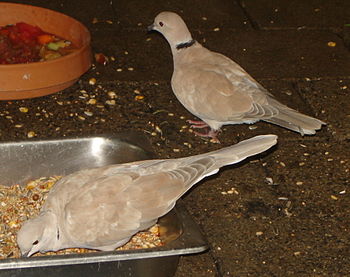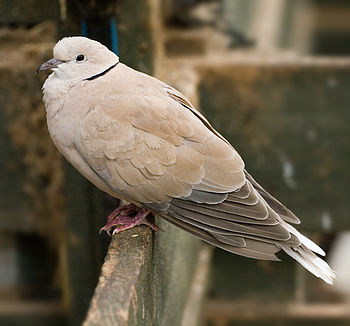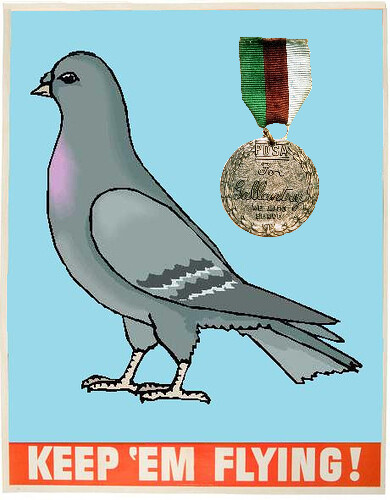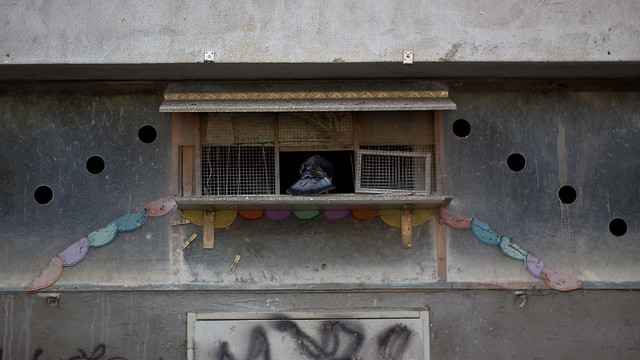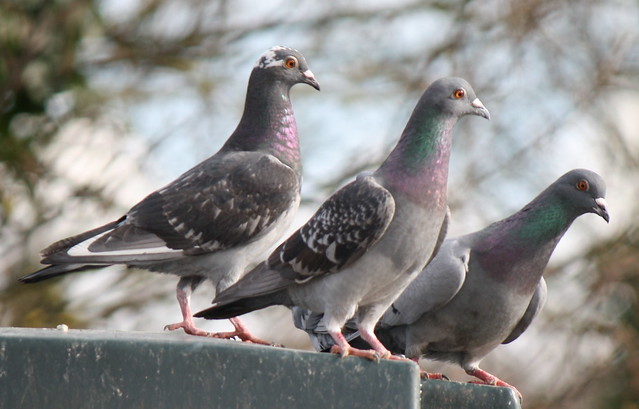
|
|
Photo by jans canon |
Pigeons possess stout bodies with short necks, having slender bills and fleshy cere. The common species of pigeon generally available in the localities is the feral Rock Pigeon. Pigeons prefer to make their nests with the help of sticks and other debris which may be placed on the trees, ground and on the spaces of buildings depending upon the species. Pigeons lay one or two eggs at a time and both the parents participate in caring the young ones which leave the nest after 7 to 28 days after their birth. Pigeons feed on seeds, fruits, and plants. Like other birds pigeons also produce crop milk which is secreted by the sloughing of fluid filled cells lining the crop. Both males and females are able to produce the crop milk for nourishing the young ones.
Morphology
Pigeons differ in body size according to the species. The largest species of pigeons are the crowned pigeons of New Guinea which are about the size of a
turkey weighing about 2-4 kilograms. The smallest species are the ground doves of the genus Columbina which are almost equivalent to the size of the house sparrow and weighing about 22 grams. Taxonomically the smaller species are called as doves and the larger ones are called pigeons and there are no distinguishing features between the two. Pigeons have short bills and short legs. Head is also small with a compact body. Pigeons have large wings with strong wing muscles comprising about 31-40% of their total body weight. They are amongst the strongest flying birds. The plumage of the family is also variable. The species that feed on seeds are called as granivorous species and they have dull plumage while the species feeding on fruits are called frugivorous and they are brightly coloured. Pigeons may be sexually monochromatic or dichromatic. Apart from the bright colours pigeons also bear spotted patterns as well as other ornamentations. Pigeons lack gall bladder.
Distribution and Habitat
Pigeons are found all over the world except the Sahara desert, Antarctica, its surrounding islands and the high Arctic. The pigeon colonies are easily found around the major oceanic islands including Polynesia and Chatham islands in the Pacific, Mauritius, Indian Ocean and the Atlantic Ocean. The pigeons are able to survive every type of habitat available on earth. The largest number of species is found in the tropical forests and the woodlands where are adapted to the arboreal, terrestrial and semi-terrestrial habitats. Pigeon species are also available in the temperate forests, savannas, grasslands,
deserts, mangrove forests and even the barren lands. Some species have long natural ranges also. The largest range for any species of pigeon is that of the Rock pigeon. The rock pigeon species is naturally distributed from Britain and
Ireland to northern Africa, across Europe, Arabia, Central Asia, India, the Himalayas and up into China and Mongolia. Domestication has a great role in the spread of this species. Presently the species is found across major areas of North America, Japan and Australia. Some species have also changed their natural habitats because of the activities of human beings also.
Diet
Fruits and seeds are the major food constituents of pigeons. The family can be divided into the seed eating members or the granivorous species coming under the subfamily Columbinae and those which prefer to feed on the fruits or the frugivorous species forming the other four subfamilies. Granivorous species particularly feed on the seeds present on the ground and the frugivorous species feeding on fruits tend to feed on the trees. Both types of species have different morphological adaptations that can be helpful in distinguishing the two. Gizzard walls are thick in the granivorous species while it is thin in the frugivorous species. Frugivorous species have short intestines while the seed eating species have long intestines. Frugivores are capable of clinging on the branches to reach the fruits. Apart from seeds and fruits species also take other type of materials also as a part of food. Some species particularly the quail doves and ground doves also feed on worms and insects.
Atoll Fruit dove is specialized for feeding on insects and reptiles as a part of its food. Some species like the Orange dove, White crowned pigeons feed on snails, insects and moths.
Evolutionary Status
Columbidae is having no correlation with other bird families. The fossil
records for the pigeon family is also very limited and only one can predict
that they evolved from parrot like birds on the basis of their feeding habits.
The family is further classified into five subfamilies but this demarcation is inappropriate. The DNA sequencing of the members of the pigeon family also show variations among the members and provide the clue about the inappropriate classification of the family.
Economic Importance
Pigeon and doves are consumed as food especially the stronger breast muscles are the perfect source of meat. They are relished by the people across the globe. In Europe the Wood pigeon is the game bird and helps in earning a good sum of money. The Rock pigeon which is basically domesticated for meat is now available in different breeds today which enhance its meat value. The
Passenger pigeon has become extinct today as it was hunted by the humans for its meat on greater scale. The pigeons have also played a major role during the World War I and the II as the pigeons were decorated with the Dickin Medal for the people who have contributed their lives for the war. Pigeons are also
considered holy in the Bible as they are the symbols of Holy Ghost in the New
Testament and were also used as offerings in the olden times of the Bible.
They are also used as the symbol of final assistance of the prophet in the
Islam.
Conservation
Pigeons and doves have benefited human beings since time immemorial. Some species have come on the verge of extinction because of immense shooting. Two species of pigeons including the Dodo and the Passenger pigeons have become extinct today because of mass shooting. About 59 species of pigeons and dove are under the category of threatened species. The Polynesian ground dove is an exceptionally critically endangered species. Various schemes are under progress to save these endangered species from extinction.
We can conclude that pigeons are the beautiful birds which require our
attention to save them from extinction.
|


